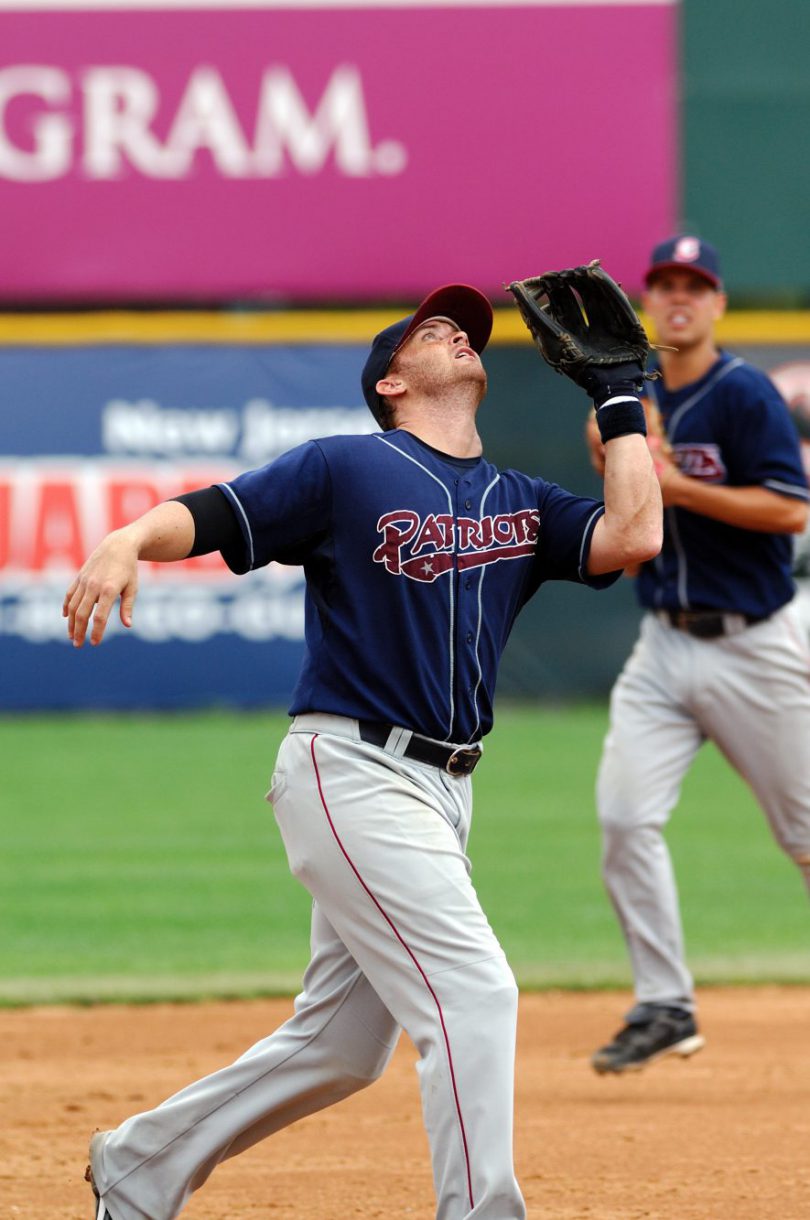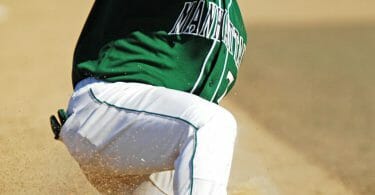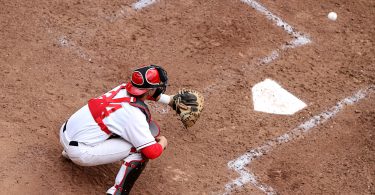The Situation: It’s the bottom of the 4th and there are runners on 2nd and 3rd with 2 outs. The home team is up to bat and has a 1-0 lead. There is a 1-1 count on the batter.
The Play: The 1-1 pitch comes in and the batter takes a big swing, sending a towering pop-up along the third base fence line. The third baseman, catcher and shortstop all go after the ball. After a moment of hang time, it becomes obvious that the third baseman will have the best play on the ball. He drifts, watching the ball, heading towards the fence. The ball comes down right along the fence, but playable. As the ball comes down, the third baseman gets to the spot right up against the fence. He bumps the fence ever so slightly, and the ball hits the heel of his glove and falls to the ground.
The Outcome: With new life at the plate, the batter battles his way to a full count before drawing a walk. The next hitter laces a double into the gap, scoring two. A few pitches later, a base hit scores the runner at second and the score is 4-0 before the defense can get the final out.
What went wrong?
In this scenario, there are several problems. The inability of the pitcher to pick-up his teammate who committed the error is frustrating, but we want you to avoid the dropped pop-up that extended the inning.
At the high school and college level, we see high fly balls or pop-ups that wind up along the fence or next to different obstacles like a tarp all the time. Most of the time, the dropped ball is caused by the way the defender gets to the ball. As was the case in this scenario, the third baseman drifted to the ball instead of reading the trajectory, getting to a spot so he can find the fence and camp under the ball. Getting to the ball quickly is extremely important and something that needs to be worked on, because most of the time, it means taking your eye off the ball for a short period of time – often an unnatural move. Here is what needs to be done on a ball hit close to the fence when it’s high enough for the defender to get under the ball with a little time to spare:
- Read the flight of the ball and get a sense of where the ball will end up. As a general rule, the ball will almost always come back towards the field of play because of its backspin, so it’s important not to give up on the ball if it initially appears to be heading out of play.
- Once you have an idea where the ball is headed, sprint to the spot and find the fence.
- Once you know where the fence is, find the ball again and adjust accordingly. The sequence should be: find the ball, sprint ( and check the ball again if necessary), find the fence (or obstacle), and find the ball again for good.
This sequence is advanced, difficult, and takes practice. Once you can do it, however, it eliminates drifting to the ball and allows you to get to the ball and know where any obstacles of interference are early, so you can focus on making the catch.
In addition to the skills practiced and developed above, player-to-player communication is key. Off the bat, the catcher took a few steps towards the ball but soon recognized it would not be his play to make. The catcher should now act as an extra set of eyes to help the third baseman locate the fence. He should vocally warn the third baseman with subsequent “room, room, room!” calls, followed by “fence!” when the third baseman is about to connect with the fence. Communication is paramount on defense. The catcher needs to be the eyes of the third baseman when he’s engaged with the flight of the ball.







